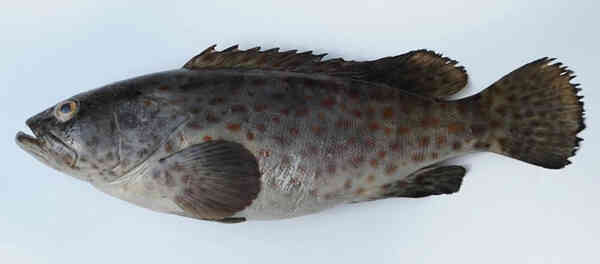Grouper is the general name for fish of the subfamily Epinephelinae, belonging to the class Osteichthyes, the subclass Neopterygii, the order Acanthopterygii, the order Perciformes, the suborder Percoidei, and the family Serranidae. It is a large and medium-sized warm-water marine fish, widely distributed in tropical and subtropical waters. In my country, it is mainly distributed in the Taiwan Strait and the South China Sea.

Grouper is a typical predatory carnivorous fish. It relies on its sensitive vision and light and color perception ability to ferociously prey on fish, shrimp, crab, octopus, and even barnacles and other marine life. It especially likes to eat fresh animals. It is an endangered and precious species. Grouper is a kind of perciformes. Its head is larger than other fish, and most of its species are large species. Compared with other tropical fish, its body color is less bright, almost similar to the color of the surrounding rocks.
Due to its rich nutrition, delicious meat, low fat and high protein, grouper is considered one of the four famous fishes in my country in Hong Kong and Macao, and is a must-have high-quality edible fish for high-end banquets. It is expensive and has high economic value. It is one of the important farmed fish in my country's coastal areas and has been widely farmed in China and Southeast Asian countries.
Grouper is the top predator in the coral reef ecosystem. Most of them are carnivorous and mainly feed on other fish, crustaceans and cephalopods. There are many types of grouper: sea red grouper, eastern grouper, western grouper, Thai grouper, leopard grouper, mouse grouper, tiger grouper, blue grouper, hemp grouper, golden grouper, cedar grouper, Su rat grouper, red melon seed grouper, spotted grouper, red spotted grouper, blue grouper, and oblique band grouper.
Among groupers, blue grouper has the highest protein content, which is higher than that of yellow croaker, followed by brown grouper, pearl grouper and spotted grouper. The protein content of seven-band grouper and red-spotted grouper is similar to that of Chinese sea bass and turbot, while the protein content of saddle grouper and American black grouper is close to that of red sea bream, which is relatively low, about 66% (dry weight), but the fat content is more than 10 times higher than that of turbot.
Grouper is rich in nutrients, but is easily oxidized and rancid, contaminated by bacteria, has a short shelf life, and cannot meet the needs of long-term storage. Therefore, how to inhibit the growth of microorganisms and fat oxidation in the fish body and preserve the freshness of grouper meat has always been a hot topic in the research of this type of marine fish. At present, the preservation of grouper mainly adopts low-temperature refrigeration, cold seawater preservation, micro-freezing preservation, gas conditioning or vacuum preservation, composite preservatives, etc. Some emerging preservation technologies such as irradiation preservation, ultra-high pressure preservation technology, ozone preservation, fence technology, ice-free preservation, ultra-cold preservation, microbial preservation, etc. are used in aquatic products such as crucian carp, carp, oysters, and salmon, but there is little research on the preservation and processing of grouper.